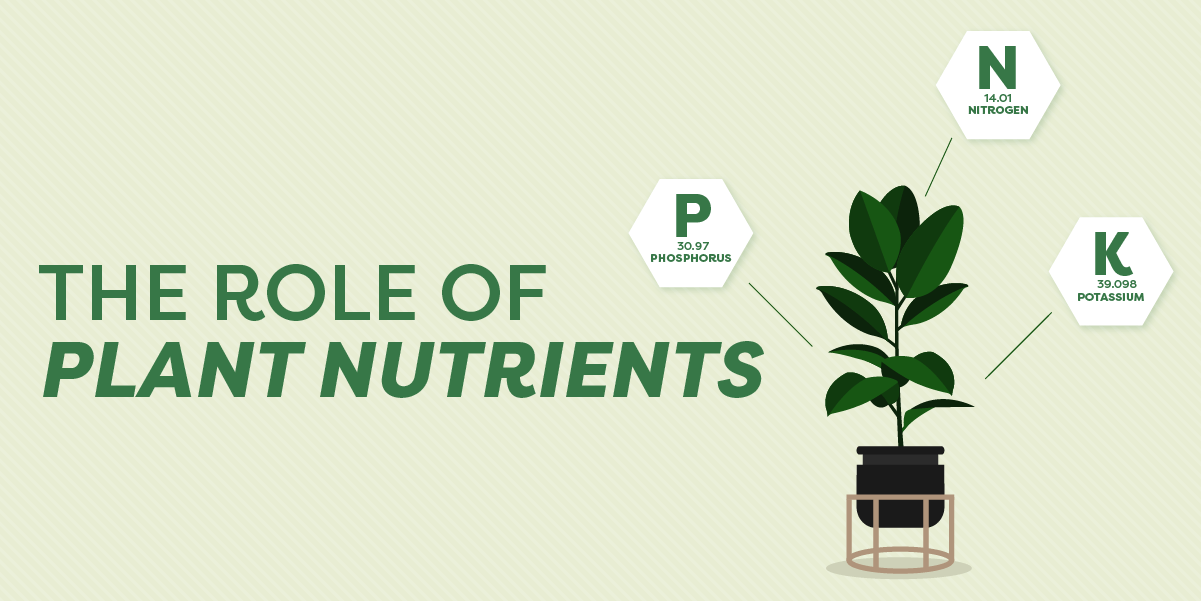To understand fertilizer and what it does, you must know the roles plant nutrients play in a plant’s growth and development.
Each nutrient has a specific function essential for plant health and productivity.
In this blog, we’ve included a list of primary and secondary nutrients most plants require. Required amounts differ from plant to plant, but plants need nitrogen, phosphorus, and potassium in the largest quantities.
Macronutrients (Primary Plant Nutrients)
Nitrogen (N)
- Essential component of chlorophyll, hormones, amino acids, and important proteins, including enzymes and vitamins.
- Produces lush green growth.
- Helps assimilate phosphorus, potash, and other plant foods.
- Increases seed and fruit production.
- Aids in the production of oils, sugars, and starches.
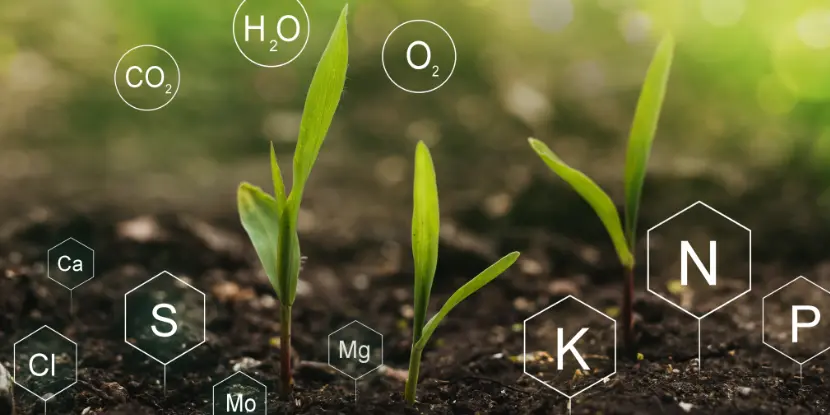
Every plant need the big three nutrients — nitrogen, potassium, and phosphorous — plus micronutrients in smaller amounts.
Phosphorous (P)
- Found in nucleoproteins and lipoids, or phosphatized fats.
- Essential for carbohydrate transformations and respiration.
- Stimulates early stem and foliage growth and hardy root formation.
- Hastens maturity.
- Promotes colorful flowers, vibrant fruits, and vegetables.
- Involved in high-energy bonding.
Potassium (K)
- Essential to photosynthesis and cambial activity.
- Produces sturdy stalks and robust root systems.
- Improves drought, disease, and cold resistance.
- Assists in photosynthesis — the transformation of sunlight into food energy.
- Regulates water balance and increases disease resistance.
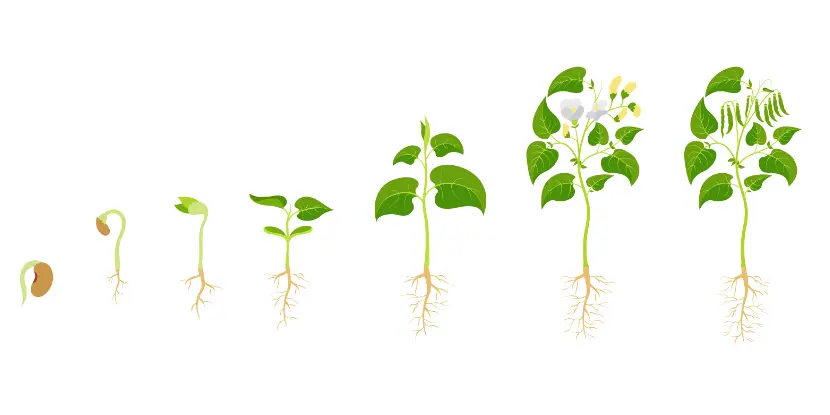
Plants need nutrients at every stage of their development, from seed to fruit.
Micronutrients (Secondary Nutrients)
Boron (B)
- Increases mobility of sugars and calcium.
- Important in cell division and protein synthesis.
- Essential to pollination.
- Affects flower formation, fruit set, and seed production.
Calcium (Ca)
- Promotes early growth and root formation.
- Regulates uptake of other nutrients.
- Helps resist disease.
- Essential to cell wall formation.
- Indirectly involved with cell division.
Chlorine (Cl)
- Aids in photosynthesis.
- Influences water movement through plants.
Cobalt (Co)
- Part of vitamin B12.
- Aids in nitrogen fixation.
Copper (Cu)
- Important for reproductive growth and seed production.
- Essential for iron utilization.
- Necessary for certain enzyme processes, functioning as an activator.
Iron (Fe)
- Used in photosynthesis and nitrogen fixation.
- Plays a role in respiration processes.
- Essential to chlorophyll production.
- Helps with enzyme functions.
- Used in chlorophyll synthesis.
- Helps plants use oxygen.
Magnesium (Mg)
- Important for photosynthesis and energy storage.
- Involved in energy transfer.
- Involved in protein synthesis and cell division
Manganese (Mn)
- Helps plants use energy from sunlight.
- Activates enzymes involved in the breakdown of carbohydrates and nitrogen metabolism.
- Aids in chlorophyll production.
Molybdenum (Mb)
- Involved in nitrogen fixation.
- Helps prevent nitrate toxicity.
Silicon (Si)
- Essential for diatoms (unicellular marine algae).
- May be required by some grasses (silicon is abundant in grasses).
- Helps plants withstand environmental stresses.
Sodium (Na)
- May be essential for some blue-green algae.
- Helps regulate the uptake of other nutrients.
- Aids in water regulation and movement within the plant.
Sulfur (S)
- Important in the formation of proteins, oils, and vitamins.
- Aids in seed production and root growth.
- Component of amino acids and proteins.
- Functions in the formation of chlorophyll.
Zinc (Zn)
- Necessary for growth hormone balance.
- Aids in seed formation and maturation.
Applying Plant Nutrients
Application methods include foliar spray, fertigation, and soil application. The method you choose will depend on the nutrient and the plant’s needs.
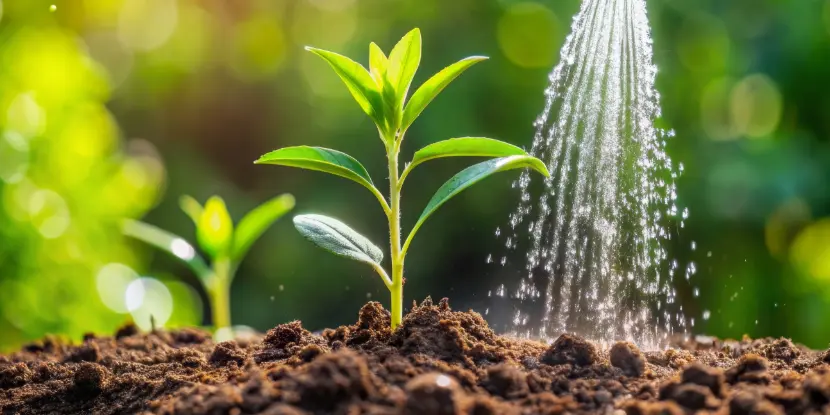
Fertilizer can be applied in a dilute solution as part of a watering routine.
Foliar Spray
Foliar spraying involves applying a dilute solution of nutrients directly onto the leaves of plants. This method quickly corrects nutrient deficiencies or provides a boost during periods of high demand, such as flowering or fruiting.
Steps for Application
- Choose the appropriate nutrient solution per the plant’s requirements.
- Mix the nutrients with water according to the manufacturer’s instructions to create a dilute solution.
- Spray the solution onto the plant’s leaves, covering both surfaces.
- Repeat every 2–3 weeks or as needed.
Fertigation
Fertigation is the process of applying nutrients through irrigation water. This method allows for the precise and efficient delivery of nutrients directly to the plant’s root zone.
Steps for Application
- Choose a water-soluble fertilizer appropriate for your plant’s needs.
- Mix the fertilizer with water in a fertigation tank or injector according to the manufacturer’s instructions.
- Run your irrigation system per usual, allowing the nutrient solution to be evenly distributed throughout the root zone.
- Repeat every 2–3 weeks or as needed.
Soil Application
Soil application incorporates nutrients into the soil through dry fertilizers, granules, or amendments. This method provides slow-release nutrients that sustain plants over extended periods.
Steps for Application
- Choose the appropriate fertilizer based on your plant’s needs and soil test results.
- Dig small holes around the base of the plant and distribute the fertilizer evenly in each hole.
- Cover with soil and water thoroughly.
- Repeat every 4–6 weeks or as needed.
GARDENER’S NOTE: Excess nutrients can harm plants and the environment. Always follow instructions carefully and conduct soil tests to determine your plants’ exact needs before applying fertilizers.
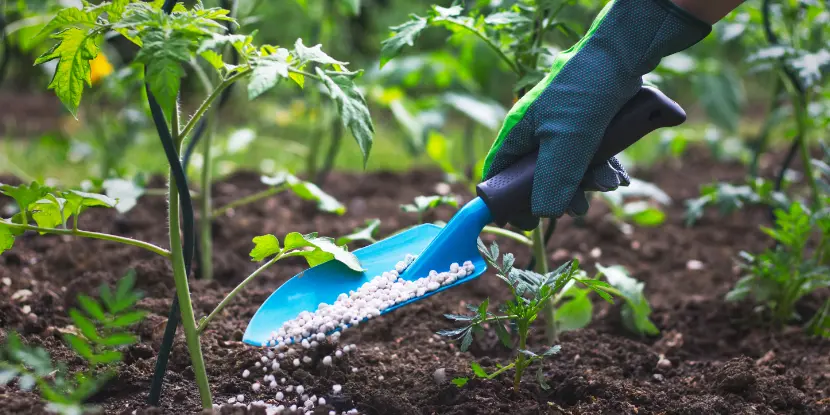
A gardener applies slow-release fertilizer pellets to a young tomato plant.
Measuring Soil pH
Each nutrient has an optimum range of pH points. A soil pH above or below this optimum range can tie up certain nutrient elements, making them unavailable for plants.
A pH test will tell you if you’re having nutrient problems.
- Obtain a soil sample by taking several small samples from different areas of your garden.
- Mix the samples in a clean container.
- Using a pH test kit, follow the manufacturer’s instructions to determine the pH of your soil.
- If the pH is too high or too low, use lime or sulfur to adjust it accordingly.
- Retest after a few weeks to ensure the desired pH has been reached.
If you still need help with plant nutrients (or the lack thereof), please visit your local Anawalt Garden Center. One of our nursery professionals can then guide you to the correct fertilizers.
FAQs: Plant Nutrients
Q: Can I use the same fertilizer for all of my plants?
No, different plants have different nutrient requirements. Choose a fertilizer formulated for your type of plant.
Q: How often should I fertilize my plants?
This depends on the plant and the method of application. Some plants may need to be fertilized every 2–3 weeks, while others only require monthly or seasonal fertilization.
Q: Are organic fertilizers better than synthetic ones?
Both types have their advantages and disadvantages. Organic fertilizers release nutrients slowly over time and can improve soil health, but they may not provide nutrients in the correct ratios. Synthetic fertilizers are more precise in terms of nutrient content but can be harmful to the environment if overused.
Q: Can I make my own fertilizer at home?
Many recipes online for making natural fertilizers use ingredients like compost, manure, and seaweed. Before you make your fertilizer, you’ll need a soil test to determine what nutrients your plants need.
Q: How can I tell if my plant is deficient in a particular nutrient?
Nutrient deficiencies often manifest as physical symptoms in plants, such as yellowing leaves, stunted growth, or poor flowering. A soil test can help identify deficiencies, allowing for targeted nutrient application.
Q: What’s the difference between micronutrients and macronutrients?
Macronutrients are nutrients that plants need in larger amounts, such as nitrogen, phosphorus, and potassium. Micronutrients, like iron, zinc, and molybdenum, are required in much smaller quantities but are still essential for plant health and growth.
Q: Can over-fertilizing harm my plants?
Yes, over-fertilizing can lead to nutrient burn, where the tips of the leaves turn brown and dry out. It can also cause an imbalance in the soil’s nutrient levels, inhibiting the plant’s ability to absorb other essential nutrients.
Q: Is it necessary to fertilize indoor plants differently from outdoor plants?
Due to light, temperature, and humidity differences, indoor plants often require different fertilizers and application frequencies than outdoor plants. Choose a fertilizer formulated for indoor plants and follow the recommended application guidelines.

